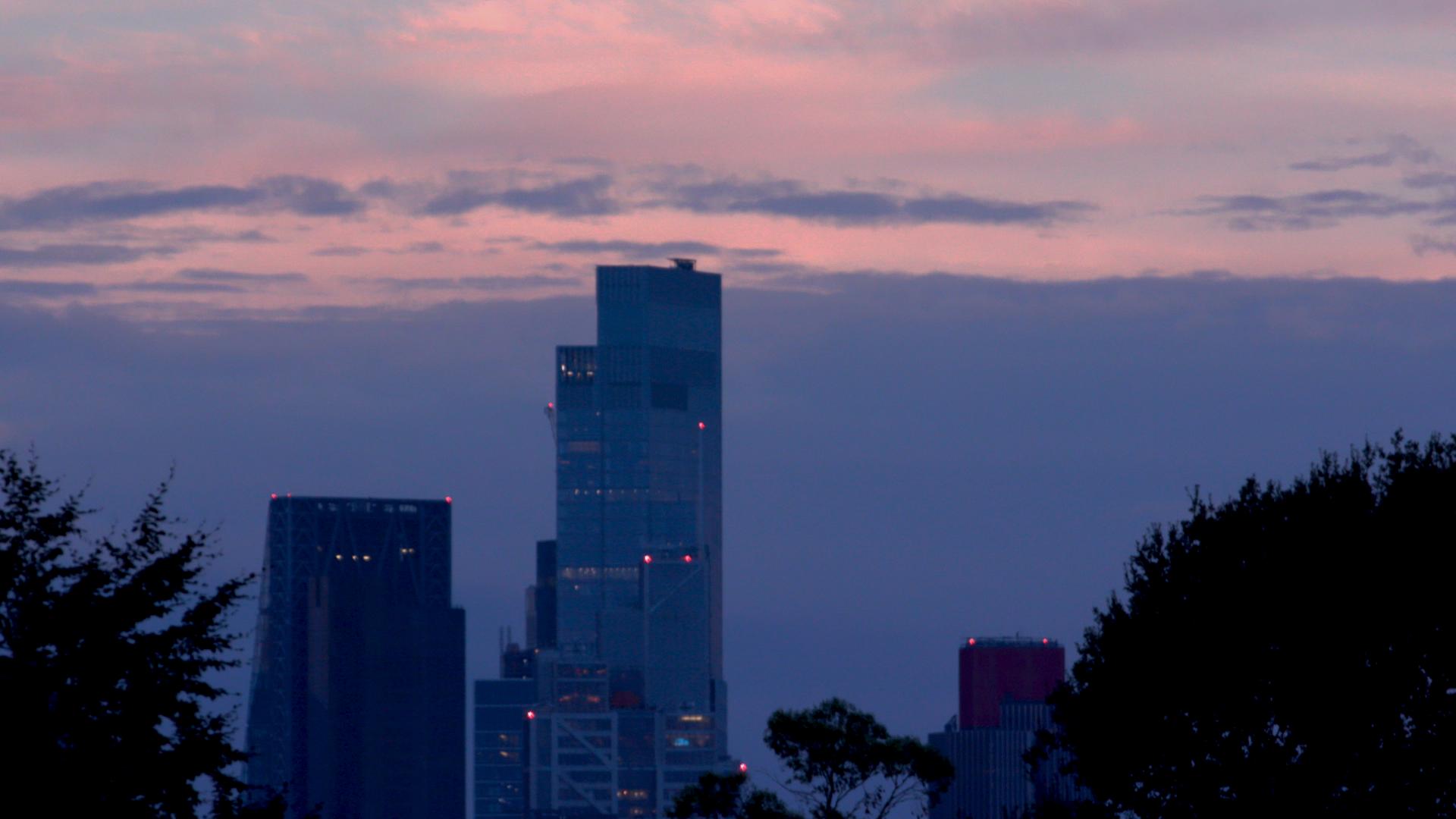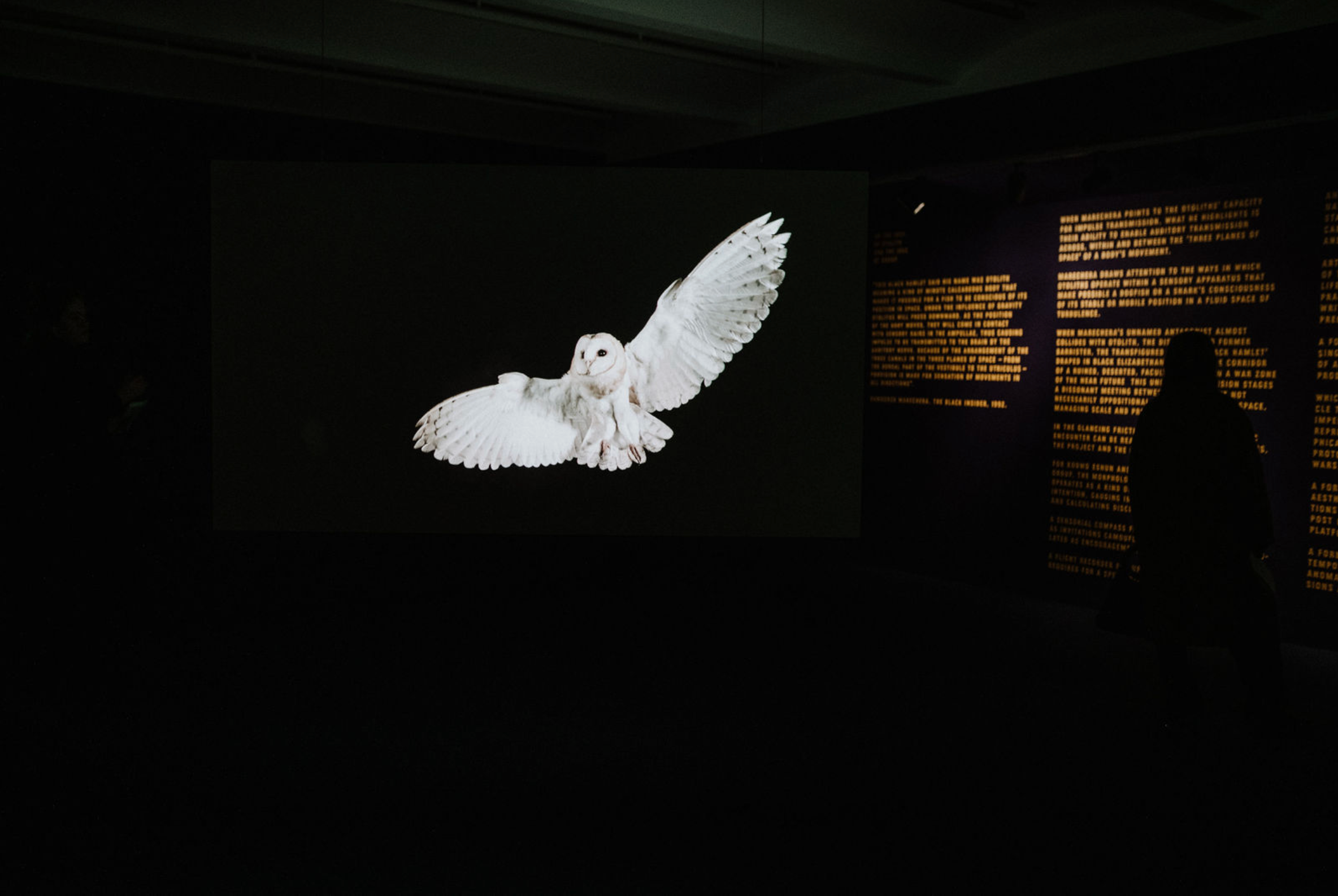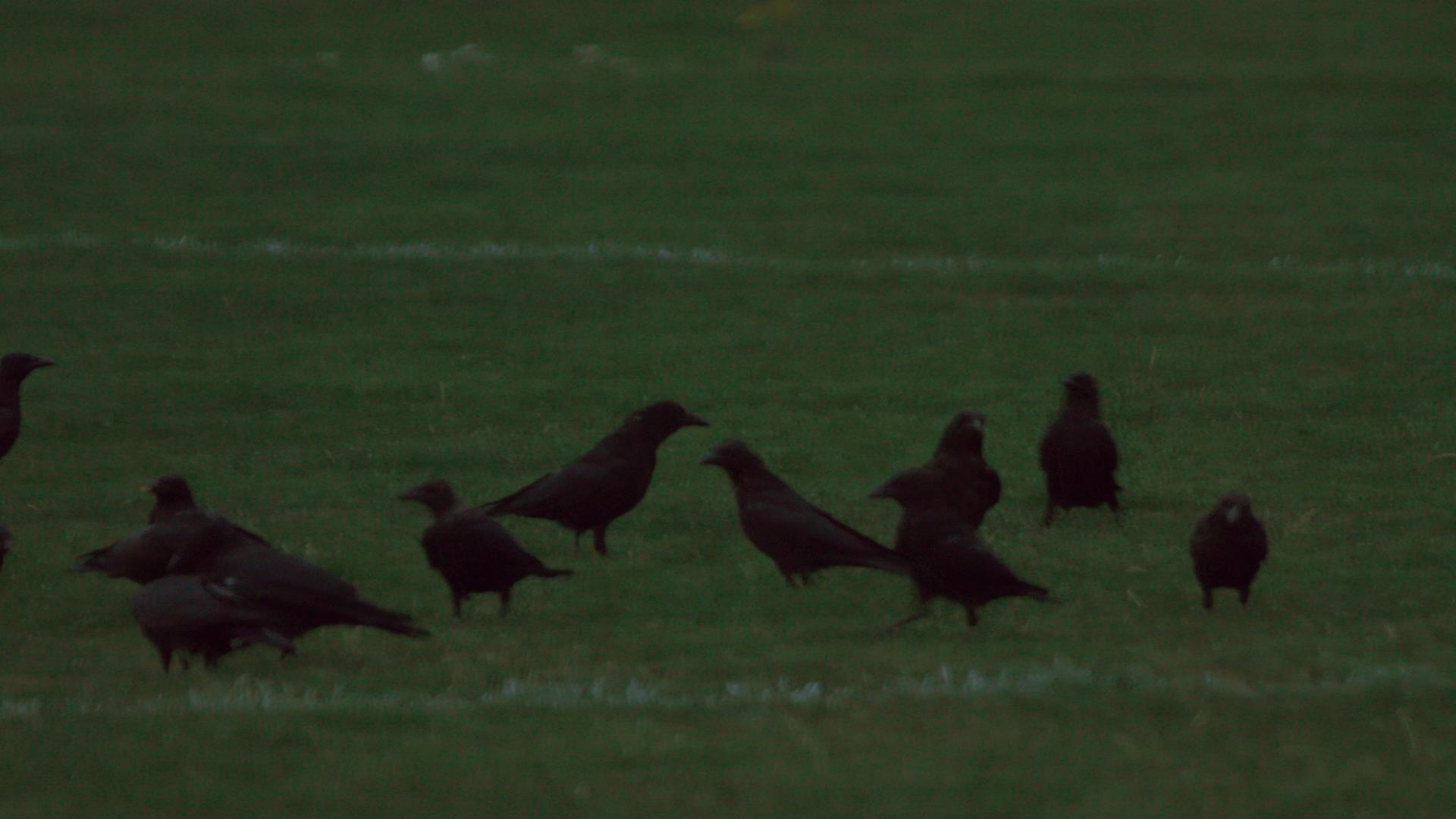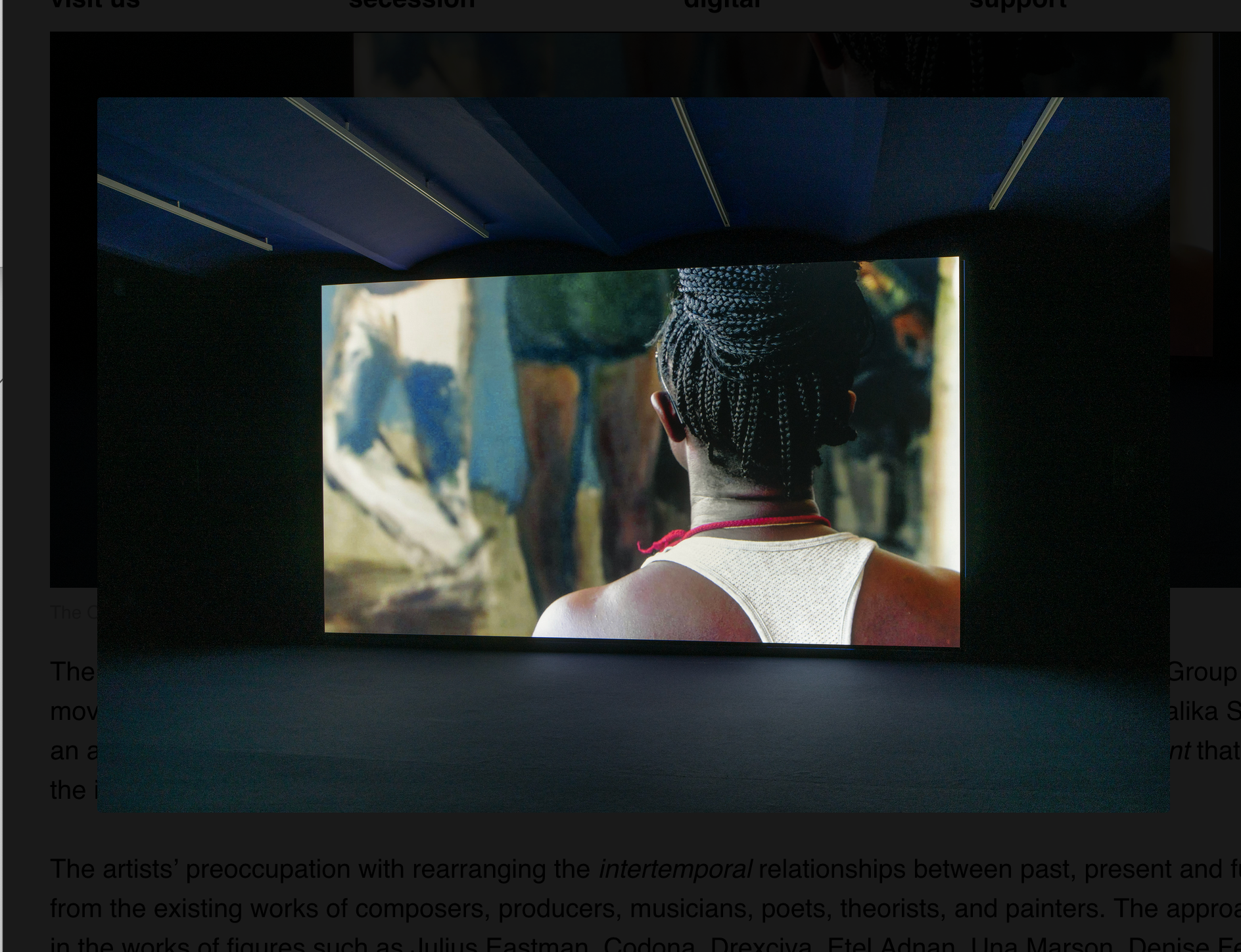The Otolith Group
What the Owl Knows
11/18/2022 – 2/5/2023
The Secession is pleased to present The Otolith Group's solo exhibition What the Owl Knows , featuring the artists' new directed cinematic work of the same title.
Starting points for the artists’ engagement with a reordering of the intertemporal relationships between past, present and future are often existing works by composers, producers, musicians, poets, theorists and painters. The approaches to sonic phenomena heard in the work of the likes of Julius Eastman, Codona, Drexciya, Etel Adnan, Una Marson, Denise Ferreira da Silva and Rabindranath Tagore suggest a range of artistic methods that explore power, mass and rethink the movement of images.
This process of listening across media allows Eshun and Sagar to seek out and engage in a sonic practice of image making that invites audiences to hear video as a choreography of images in motion. Such an approach seeks to move the audience to encounter the present as a historical experience projected from the horizon of an expectant future. In The Third Part of the Third Measure (2017), to name but one of several such works, The Otolith Group re-direct the temporal structure of the past by staging composer Julius Eastman's music from the perspective of a contemporary performance of one of his compositions - today listeners are confronted with a series of figures one being the militant figure of the gay guerrilla.
What the Owl Knows evolves from the longstanding friendship between painter and writer Lynette Yiadom-Boakye, Sagar and Eshun. The admiration that the three Londoners have for each other is a prerequisite for a work that seeks to honor the indirect elective affinities within, between and across media.
Traditional documentary formats and today's television, as well as contemporary museums and galleries, typically focus on the motives that drive the painter as a public figure to arrive at psychological insights.
In contrast, one could say that behind Eshun and Sagar's work lies a desire to thwart institutional demands for biographical explanations . This constant desire to thwart institutional demands for explication experiences a certain crescendo in What the Owl Knows : the work's underlying claim is to shift the biographical imperative that shapes the stories of cinema's encounter with painting .
Anyone who sees What the Owl Knows understands the extent to which The Otolith Group tries not to expose the work of painting and to protect the painter's presence from the exposure that the camera promises. The film aims to deconstruct the painterly work. It revels in what it doesn't reveal. The work dwells on details, dwells on fragments, and works through the negative endeavor of decomposing the layers that accumulate in the compositional process. It observes Yiadom-Boakye observing individual segments of a canvas whose total extent eludes us, contemplating her next move, weighing the heaviness of juxtaposed hues and attentively noticing the shifting balance of power of hues.
What the Owl Knows is inspired by the desire to shift the focus away from the painter as the object of attention and towards the quality of attention that the painter gives to the colour. What the Owl Knows strives for a poetics of recursion, in which the viewer takes care as the digital video takes care, like a painter takes care of what she paints.
Attention to the recursive rings in duet with a series of scenes in which Yiadom-Boakye appears as an isolated figure, silhouetted in the sodium light of streetlamps, unobligated to the camera, she walks in familiar parks, housing estates, in the quiet memory worlds of a London cityscape. As Yiadom-Boakye reads from her poems, each rearranged for and through the video, the constrained economy of introspective expressionism increasingly determines the staging.
Overriding documentary cinema's call for explanations, opens up an abyss of meaning that allows for a heightened state of intuition and suggestion through video's recourse to the deviant drama of poetic language. Oscillating between the intimacy of the interior of the studio and the drama of the outdoor scenes takes on the structure of a feeling whose interplay refers to the power of gathering in the medium of video. In the encounter between painting and poetry, the movement of the video from day to night transfers Yiadom-Boakye's nocturnal thoughts from the light to the dark and back. To listen to the light of night is to hear the night of the day. It is to sense the ceremony of the medium of video, which convenes a meeting between the immortality of painting, the dead of poetry and the life of the voice.
The Otolith Group's attention to shifting expectations is palpable in the vivid allegory that appears at the center of What the Owl Knows . Inspired by Eshun and Sagar's reading of Yiadom-Boakye's text Plans of the Night , the animated fable between an owl and a dove sees the dove as an engineer of her own descent, falling into her own trap.
Text by The Otolith Group
The Otolith Group
What the Owl Knows, 2022
HD video, color, sound
projection screen, seating furniture
55 minutes 7 seconds
Commissioned by the Secession, Vienna Co-produced by the Cooper Gallery, Duncan of Jordanstone College of Art and Design, University of Dundee




